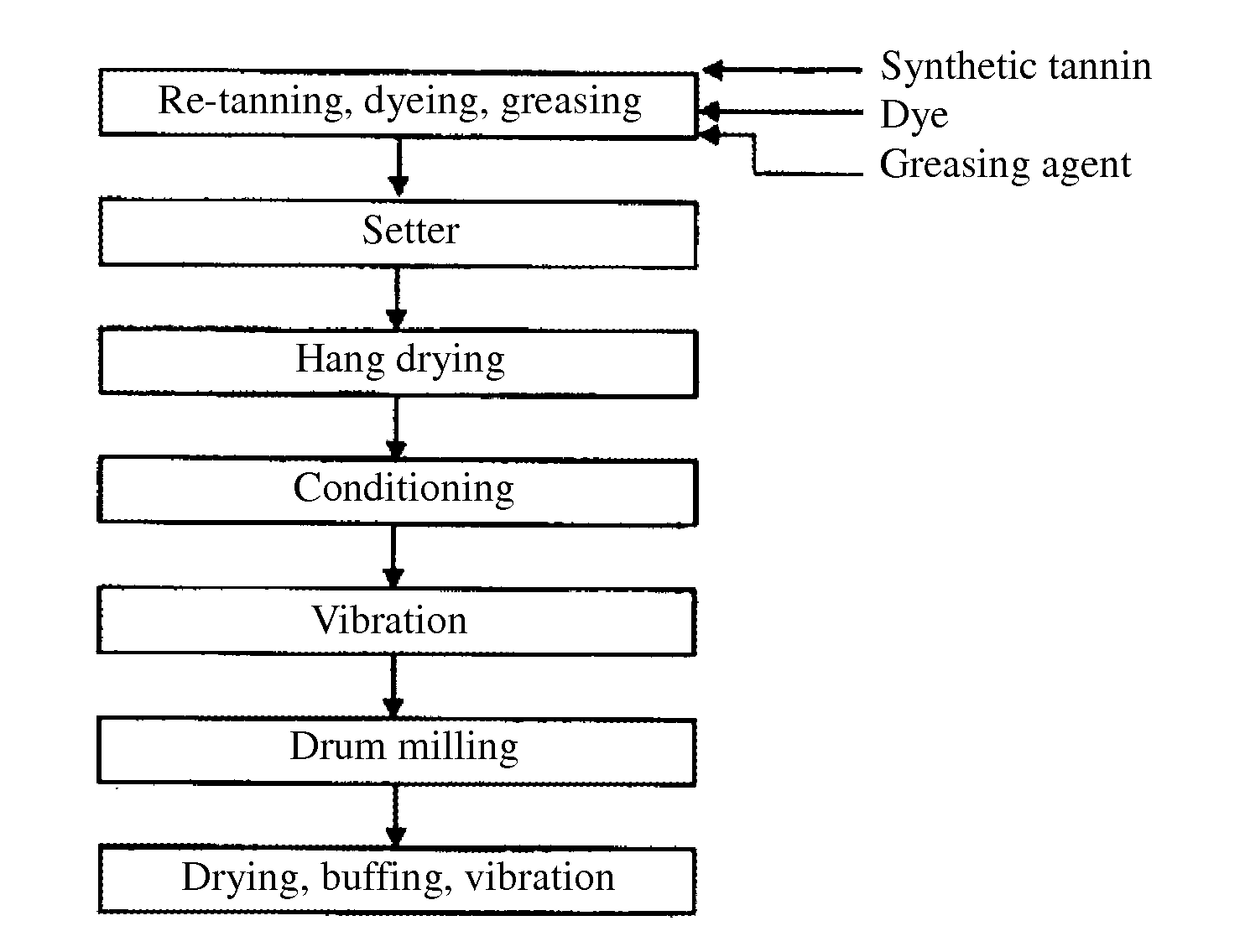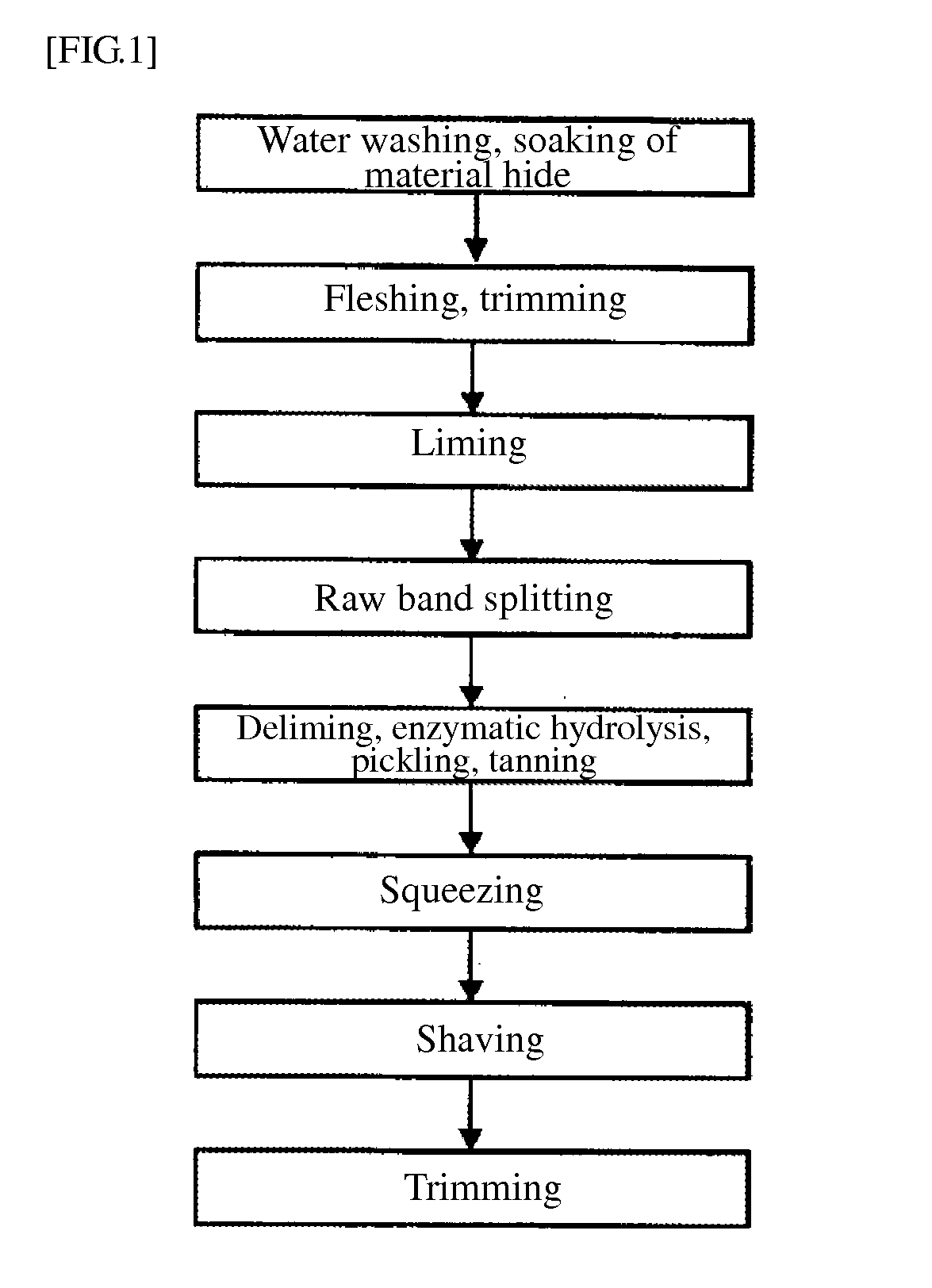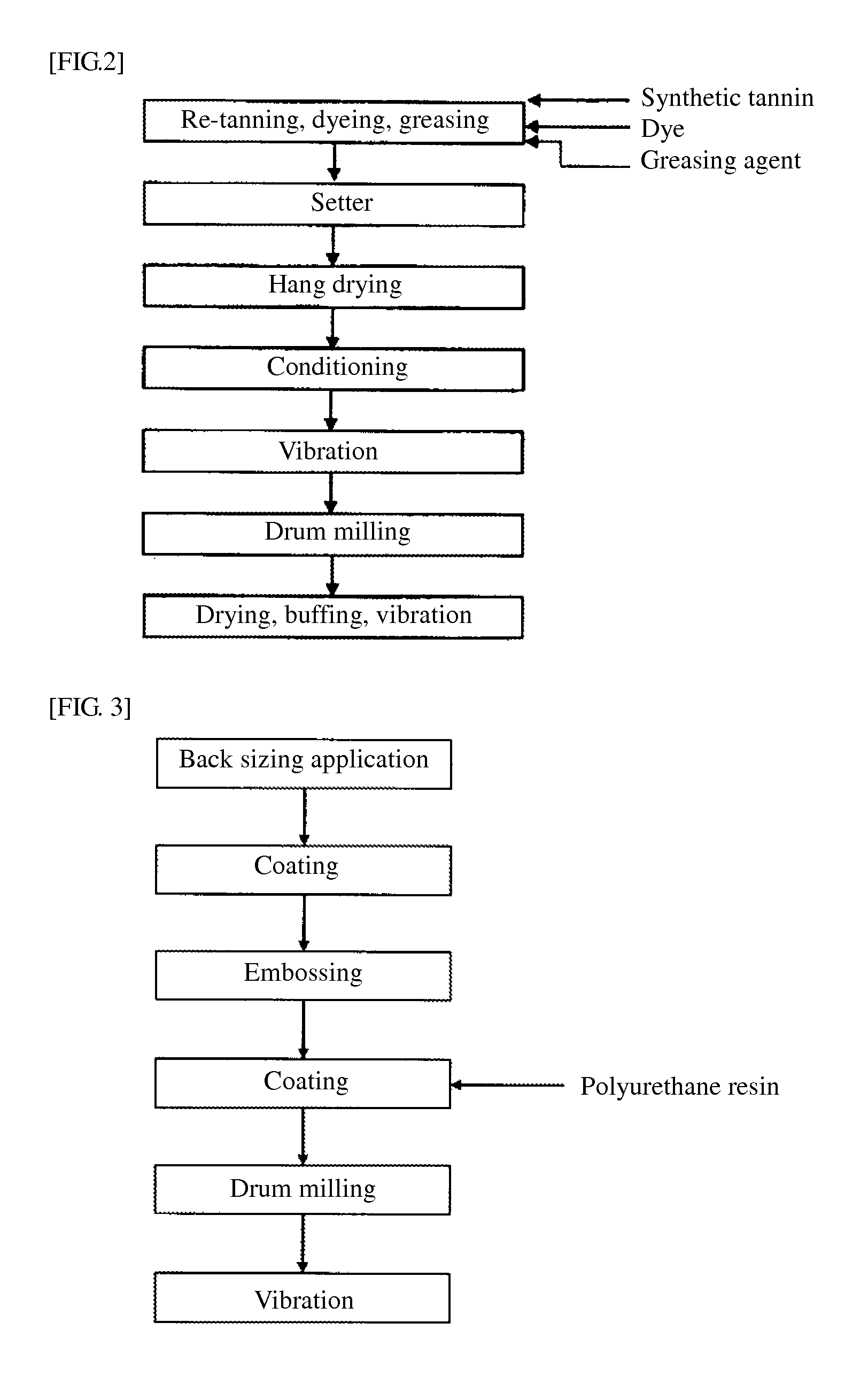Low-voc leather
a low-voc leather and leather technology, applied in the field of natural leather, can solve the problems of obstructing the driver's view, reducing driving safety, fogging of windows,
- Summary
- Abstract
- Description
- Claims
- Application Information
AI Technical Summary
Benefits of technology
Problems solved by technology
Method used
Image
Examples
example 1
(1) Tanning Agent Remaining in the Natural Leather
[0233](i) Amount remaining in the natural leather of a tanning agent using a formaldehyde condensation product of naphthalene sulfonic acid (2 parts by weight relative to 100 parts by weight of natural leather)[0234](ii) Amount of a chromium tanning agent remaining in the natural leather (3 parts by weight (as chromium oxide) relative to 100 parts by weight of natural leather)[0235](iii) Amount of a resin tanning agent remaining in the natural leather (3 parts by weight relative to 100 parts by weight of natural leather)
(2) Dye
[0236]Dye (containing carbon black)[0237]Amount of a carbon black dye remaining in the natural leather (2 parts by weight relative to 100 parts by weight of natural leather)
[0238]The natural leather treatment agent for use in the greasing step contains a greasing agent as well as a trapping agent or fixing agent for confining in the natural leather the formaldehyde and acetaldehyde generating in the natural lea...
example 2
[0244]All conditions are the same as those used in Example 1, except for the following
(2) Treatment agent that confines in the natural leather the formaldehydeand acetaldehyde generating in the natural leatherSodium hydrogen sulfite1Adipic acid dihydrozide1
Analysis Results
[0245]The treated leather thus obtained was evaluated by the Tedlar bag method to analyze the generated amounts of formaldehyde and acetaldehyde, the results of which are as follows:
Concentration of formaldehyde generated from the leather (μg / DS)0.247Concentration of acetaldehyde generated from the leather (μg / DS)0.343
example 3
[0246]All conditions are the same as those used in Example 1, except for the following
(2) Treatment agent that confines in the natural leather the formaldehydeand acetaldehyde generating in the natural leatherSodium hydrogen sulfite1 (part by weight)Adipic acid dihydrozide2 (parts by weight)
Analysis Results
[0247]The treated leather thus obtained was evaluated by the Tedlar bag method to analyze the generated amounts of formaldehyde and acetaldehyde, the results of which are as follows:
Concentration of formaldehyde generated from the leather (μg / DS)0.230Concentration of acetaldehyde generated from the leather (μg / DS)0.232
PUM
| Property | Measurement | Unit |
|---|---|---|
| temperatures | aaaaa | aaaaa |
| pH | aaaaa | aaaaa |
| pH | aaaaa | aaaaa |
Abstract
Description
Claims
Application Information
 Login to View More
Login to View More - R&D
- Intellectual Property
- Life Sciences
- Materials
- Tech Scout
- Unparalleled Data Quality
- Higher Quality Content
- 60% Fewer Hallucinations
Browse by: Latest US Patents, China's latest patents, Technical Efficacy Thesaurus, Application Domain, Technology Topic, Popular Technical Reports.
© 2025 PatSnap. All rights reserved.Legal|Privacy policy|Modern Slavery Act Transparency Statement|Sitemap|About US| Contact US: help@patsnap.com



